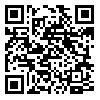Volume 13, Issue 5 (7-2014)
ijdld 2014, 13(5): 434-438 |
Back to browse issues page
Download citation:
BibTeX | RIS | EndNote | Medlars | ProCite | Reference Manager | RefWorks
Send citation to:



BibTeX | RIS | EndNote | Medlars | ProCite | Reference Manager | RefWorks
Send citation to:
Sharif M R, Nouri S. COMPARISON OF THE MEASUREMENT OF BLOOD GLUCOSE MEASURED USING ON CALL AND GLUCOCARD GLUCOMETERS AND STANDARD LABORATORY METHOD . ijdld 2014; 13 (5) :434-438
URL: http://ijdld.tums.ac.ir/article-1-5254-en.html
URL: http://ijdld.tums.ac.ir/article-1-5254-en.html
1- Associate Professor, Pediatric Infectious Diseases Subspecialist, Kashan University of Medical Sciences
2- . Researcher, Chemical Injuries Research Center, Baqiyatallah University of Medical Sciences ,Snouri1987@yahoo.com
2- . Researcher, Chemical Injuries Research Center, Baqiyatallah University of Medical Sciences ,
Abstract: (12981 Views)
Background: Diabetes Mellitus (DM) is one the most common chronic disease, with many complications including renal failure, blindness and non traumatic amputation. Prevention of complications is possible through monitoring and control of blood glucose levels. Considering how easy home blood glucose monitoring is, we decided to evaluate the performance of two available glucometers for detection of blood glucose compared with standard laboratory methods.
Methods: In this study, 369 patients with diabetes who admitted to the Shahid Beheshti hospital laboratory in 2013 selected by simple way. After fasting blood glucose testing at the laboratory by lancet devices for ONCALL and GLUCOCARD Glucometers, capillary blood was taken, and glucose measurements were performed by a special strips. Finally, we compared of capillary blood glucose levels of 369 patients as determined by test strips (Glucometers) with venous blood glucose levels measurements by the enzymatic method (the standard laboratory kit), and the results was evaluated by statistical tests such as the mean ± standard deviation, and Pearson correlation.
Results: The mean blood glucose measurements reported using the Glucocard glucometer, the ONCALL glucometer and the standard laboratory method were 127.0±51.6mg/dl, 117.9±42.1 mg/dL and 118.09±51.9 mg/dL. Results obtained using the ONCALL Glucometer had no differences with the standard method levels)p=0.901(, but obtained results from GLUCOCARD Glucometers had differences with the standard method levels(p≤0.001).
Conclusion: Diversity glucometer devices used in various parts of the country highlight the need for similar studies. We recommend use the ONCALL Glucometer with standard principles for glucose
monitoring routine.
Type of Study: Research |
Subject:
General
Received: 2014/11/1 | Accepted: 2014/11/1 | Published: 2014/11/1
Received: 2014/11/1 | Accepted: 2014/11/1 | Published: 2014/11/1
Send email to the article author
| Rights and permissions | |
 |
This work is licensed under a Creative Commons Attribution-NonCommercial 4.0 International License. |





